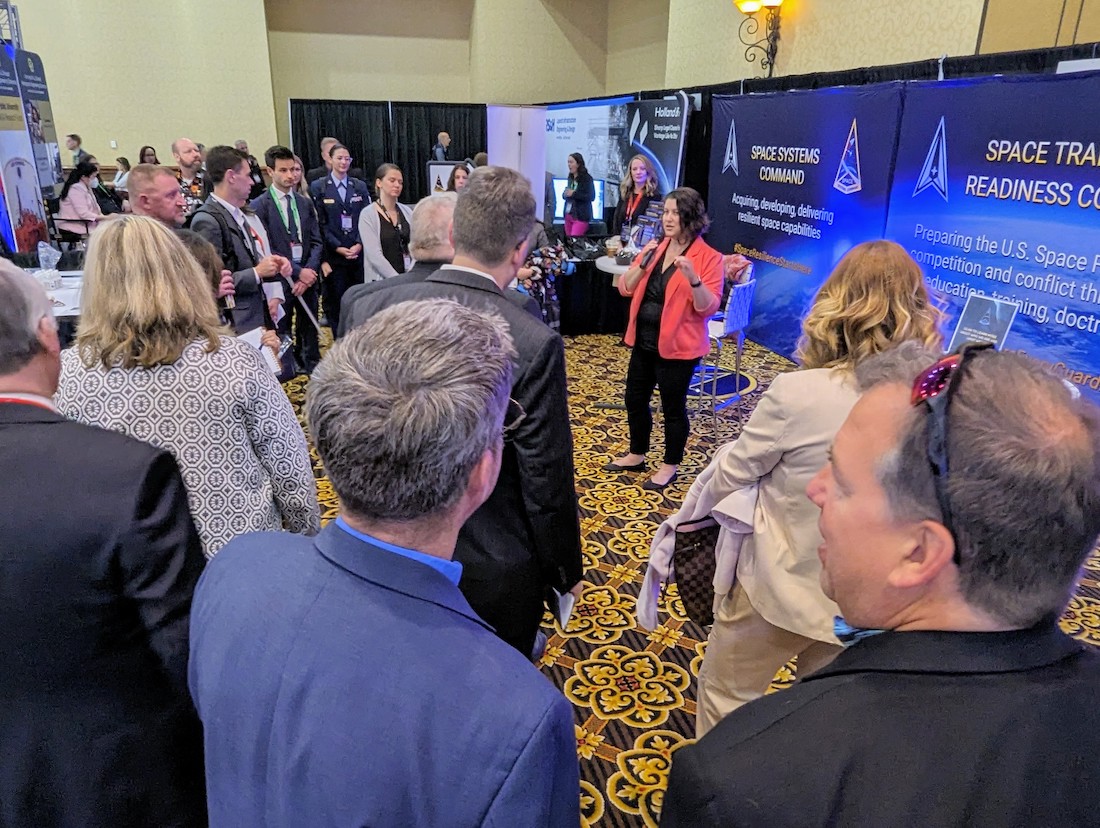WASHINGTON — A Space Force office created to work with the commercial space industry is opening up a new facility in Chantilly, Virginia.
Col. Richard Kniseley, head of the Commercial Space Office at Space Systems Command, said May 11 the location was chosen for its proximity to other government agencies that also work with the commercial space industry.
“We wanted to be close to the intelligence community, NASA, and the Space Development Agency,” Kniseley said on a webcast hosted by the National Security Space Association.
The commercial services office, known as COMSO, will oversee the procurement of satellite-based services from the private sector such as communications, imagery and weather data. It also will absorb other organizations that work with the commercial space industry, including SpaceWERX, the Space Domain Awareness data marketplace, the SSC Front Door initiative and a new program that is looking at ways the space industry could support the military during conflicts.
The Chantilly facility will be a “commercial collaboration center,” said Kniseley. The grand opening is planned for June 7 when the office will host an industry day focused on space-based navigation, positioning and timing services.
Kniseley said there is a “huge appetite” for commercial space services but it will take some time to work through bureaucratic and budgeting hurdles in order to fund these services.
Most of the funding for commercial services today is for satellite-based communications and space domain awareness data. Emerging areas of interest, he said, include space-based PNT that is not reliant on GPS, weather data and space-based data transport.
Services get a small share of Space Force funding
Industry analyst Mike Tierney, head of legislative affairs at the National Security Space Association, noted that the companies in the space sector may have set expectations too high when it comes to Space Force procurement of services.
Spending on commercial space domain awareness data, for example, is about $18 million in the 2024 budget, compared to hundreds of millions of dollars budgeted for government-owned systems.
There is a disconnect between industry’s expectations and the budget reality, he said May 9. “The COMSO office has an opportunity to clarify” what it realistically plans to buy, said Tierney. “And if we can get alignment in terms of expectations, I think we’d have a lot better dialogue between commercial and government about where the right areas are.”
Todd Harrison, managing director of Metrea Strategic Insights, said the Space Force needs to “show us their plan for how they’re going to fully leverage commercial space.”
Speaking May 9 at an NSSA webinar, said the industry has heard “a lot of talk” from the government and now wants to see more specifics.
“Where could the Space Force be leveraging commercial space services? There’s all kinds of electro optical imagery, space-based radar, radio-frequency sensing, on-orbit servicing of satellites, you can go down the list,” said Harrison. “And I don’t really see much of a plan at all. And most importantly, I don’t see it in the budget request.”
“Commercial services don’t work for everything,” he said. “But where appropriate, we should see that in the budget. We should see real funding streams. And for the most part, we’re not seeing that,” Harrison said. “The commercial space office has got a lot of work to do to catch up.”
There is a risk, said Harrison, that if the government doesn’t support some of these services, companies may not survive and “the Space Force could lose this opportunity to leverage what a lot of private capital has already invested in.”
